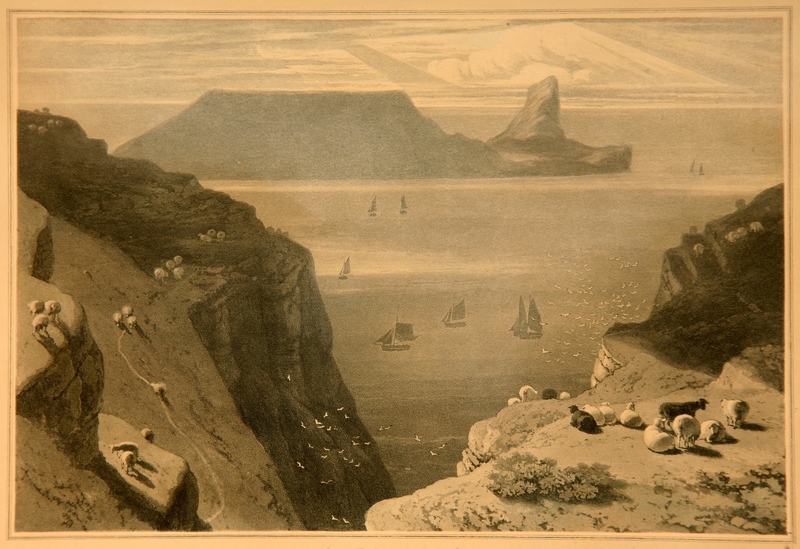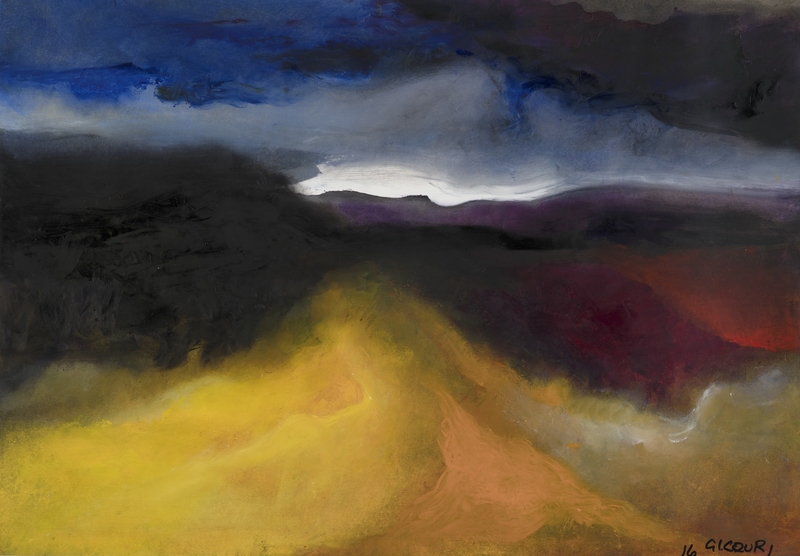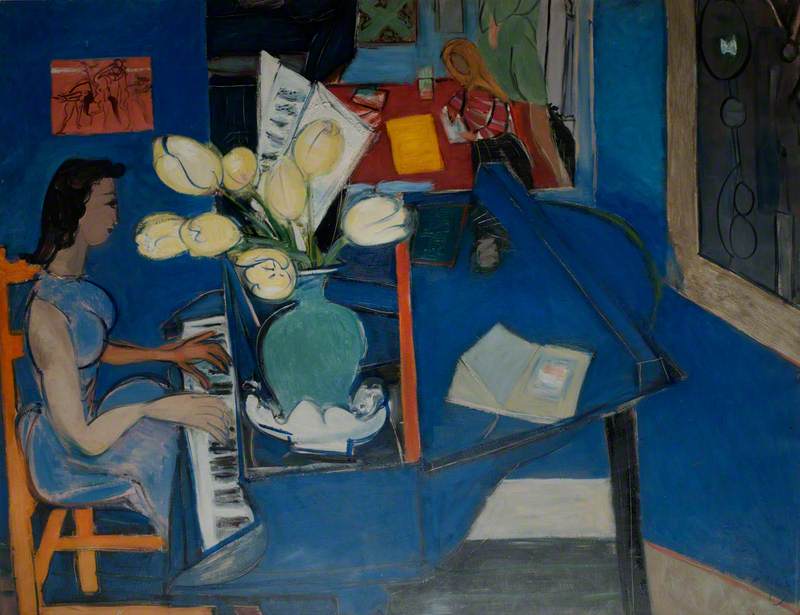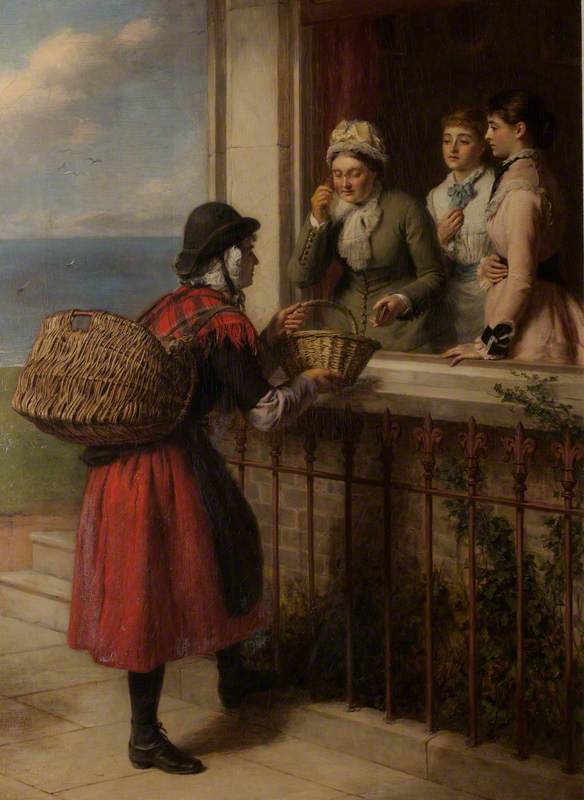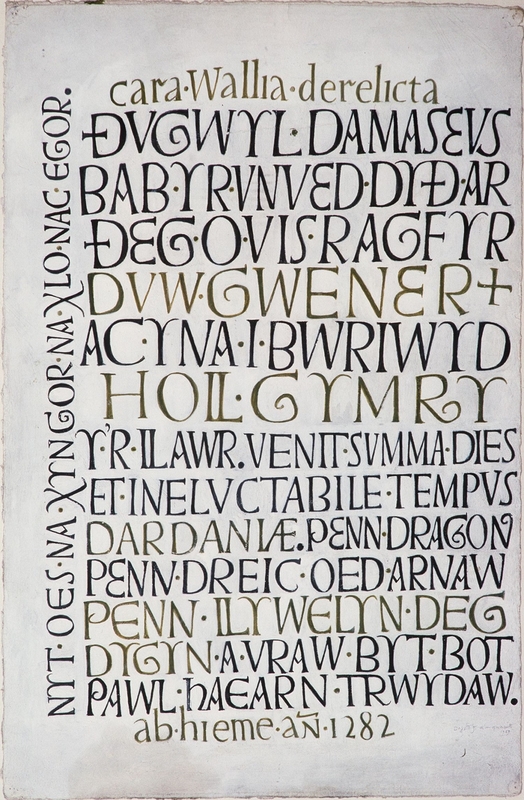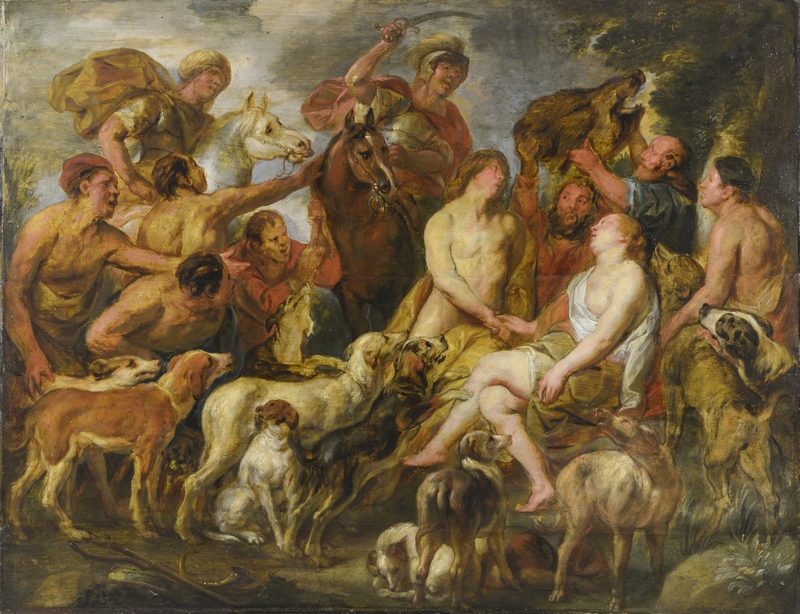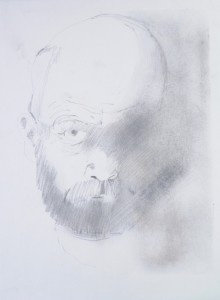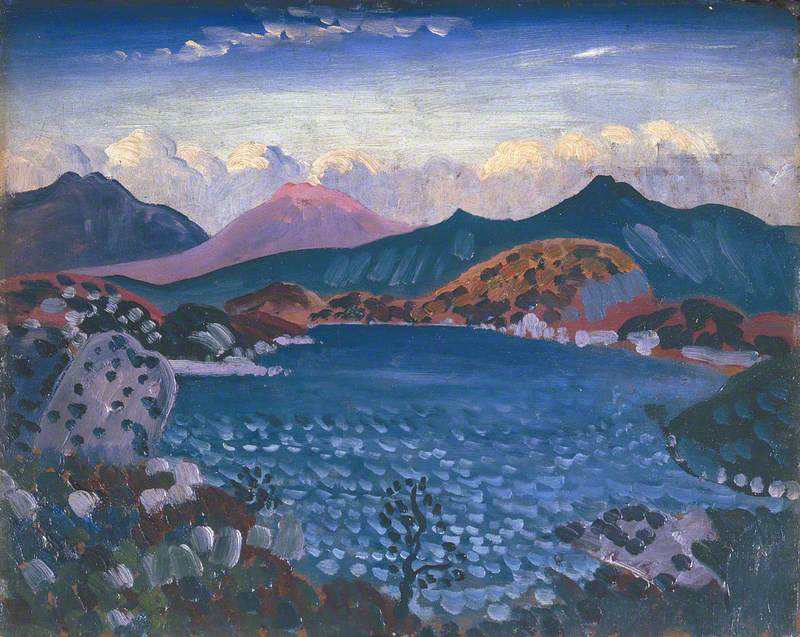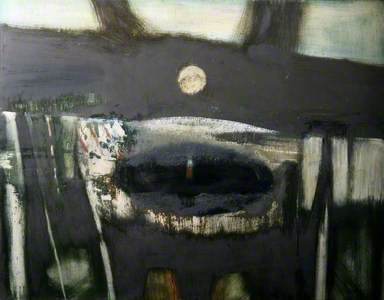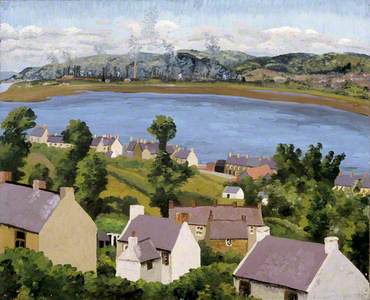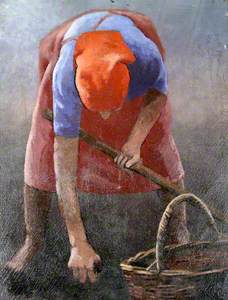The Gower peninsula was the first part of the British Isles to be designated an Area of Outstanding Natural Beauty. Its top attractions – Three Cliffs Bay and the rocky outcrop of the Worms Head at Rhosili, for instance – are a big draw for tourists, photographers and artists. The small peninsula contains a remarkable variety of scenery and habitats ranging from spectacular – and frequently painted – cliffs, coves and sandy beaches on the south coast to hilly moorland where cattle, sheep and horses roam freely and the spreading salt marshes of the Loughor Estuary.
'Cliffs, coves and cockles: picturing Gower' is drawn from the collection of the Glynn Vivian Art Gallery, Swansea, with loans from Swansea Museum, Amgueddfa Cymru and private lenders. The exhibition coincides with the 2024 Gower Festival of Music and the Arts which, this year, is celebrating the 100th birthday of one of its best-loved supporters, Mumbles artist Glenys Cour.
A number of her richly coloured, abstracted Gower landscapes are on display, including Yellow Landscape. In her 101st year, the artist's passion for colour drives her to continue working daily, painfully adjusting ever more intense and sometimes sombre colours with finger, rag and palette knife.
In Cliff Path (1984) the hillside runs down diagonally through the intense blue of sky and sea. A pink path climbs up through foliage that is orange and red, blue and green, maroon and rust. A charcoal study in the exhibition shows the simple shapes and proportions of the landscape as light and shade: a shaft of white light running through dark hills and a blacker sky. But in the finished painting colour alone expresses the artist's response to what she sees.
One of my favourite landscapes by Glenys Cour is the opposite of brightly coloured. The Pool, Cefn Bryn is a moody re-imagining of Broad Pool which lies at the foot of Gower's central hill. A bold, black framework and rough texture evoke the moorland surroundings. In the gloom and rain of a Gower winter, the pool often looks like this, dark and threatening and on the verge of flooding the road that runs beside it. But I'm sure it wasn't just bad weather that inspired Glenys's dark personal vision!
The Gower-born painter, Ceri Richards was Glenys Cour's inspirational tutor at Cardiff College of Art. This pen and ink sketch of their mutual friend, Vernon Watkins, shows the great poet of Gower on a hot July day in 1949, wearing shorts and reading from his newly published volume of poetry, The Lady with the Unicorn. The setting is Pennard, where Watkins lived and knew every inch of the surrounding cliffs and coves.
Vernon Watkins Reading from 'The Lady with the Unicorn'
1949
Ceri Giraldus Richards (1903–1971) 
When Watkins died suddenly in 1967, Richards paid homage to his friend with a personal, pictorial interpretation of his long poem Music of Colours, White Blossom (1968). Richards uses strong colours to realise the poet's lyrical meditation on death and regeneration. Against a sharp yellow background, white 'spirals of blossom', outlined in red, become greyer and rougher as they fall towards the disturbing shape of a dead black swan at the bottom of the picture. In the words of the poem, 'white must die black to be born white again.'
A number of paintings are being exhibited for the first time. They include a group of large watercolour views of Gower recently given to the Glynn Vivian Art Gallery by the granddaughters of Will Evans, tutor in lithography at Swansea College of Art. A fine painter in oil and watercolour, Evans is known mainly for his views of the ruins and rubble of Swansea after the Three Nights' Blitz of 1941.
These bold and breezy watercolours are the very opposite of those grim scenes of urban destruction. Here the artist is at leisure, enjoying the cliffs, coves and dunes of Gower's dramatic south coast or peaceful rural spots in the heart of the peninsula.
Cedric Morris was born into a family of wealthy industrialists in the Swansea suburb of Sketty. He spent much of his life in Suffolk, where he founded the East Anglian School of Painting and Drawing, counting among his pupils Maggi Hambling and Lucian Freud. During the Great Depression, he became involved with efforts to improve the lot of Welsh miners and to promote Welsh art and at that time he was a regular visitor to north Gower.
In this vivid painting 1928 of a farmhouse at the western foot of Llanmadoc Hill, the view of the hillside is flattened and simplified by bold outlines; short, vigorous brushstrokes animate the painting's surface. Most striking of all is the variety of greens, from dark olive to light cerulean, which so exactly represent the colours on a sunny spring day. In Lougher [sic] from Penclawdd (1936), on loan from Amgueddfa Cymru, Morris looked across the estuary to the chimneys of industrial Loughor.
Cedric Morris was not alone in his interest in the more industrial north east of Gower. Ernst Neuschul, a Czech émigré who stayed in Mumbles during the Second World War, was moved by the strenuous work of the cockle pickers of Penclawdd. Barefoot in the sands, a cockle picker bends double, gathering cockles with one hand and holding her rake in the other; in front is the basket in which she'll carry the cockles to Swansea market. She is an anonymous, monumental figure, symbolic of the dignity of labour.
Many of the artists who have painted on Gower have been holiday visitors. Lucien Pissarro, eldest son of the Impressionist painter, Camille Pissarro, was recovering from illness and on holiday in the village of Pennard when he painted this view of Cefn Bryn from Pennard Burrows in the early autumn of 1933. Pissarro is said to have followed the Impressionist principle of working outdoors directly from nature throughout his life and it's easy to imagine him setting up his easel on what is now a golf course and sketching away with his palette of chalky complementary colours.
During the nineteenth century, much of the Gower peninsula was inaccessible except on foot or horseback but hardy Victorian painters such as the Harris and Duncan families settled or became regular visitors, painting the busy shipping in the Bristol Channel, oyster dredgers and the rather frequent wrecks. Edward Duncan's Wreck of the Norwegian Ship 'Mercur' at Slade is a good example.
Wreck of the Norwegian Ship 'Mercur' at Slade
1879
Edward Duncan (1803–1882) 
The earliest work in the exhibition is a small pen and ink drawing of the ruins of Oystermouth Castle by the caricaturist Thomas Rowlandson. It was probably intended as a book illustration for Henry Wigstead's Remarks on a Tour in North and South Wales in 1797, published in 1799.
Oystermouth Castle – A Drawing from Nature
1797
Thomas Rowlandson (1757–1827) 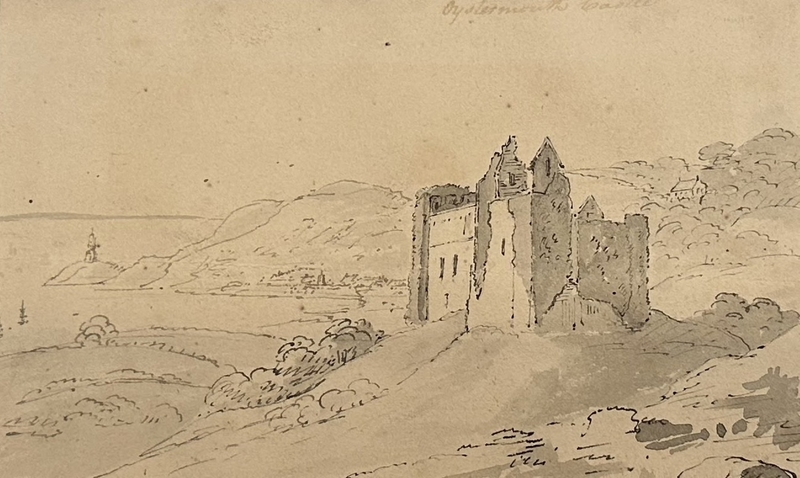
At that time, because war with France made foreign travel difficult, tours of the mountains and waterfalls, ruined castles and abbeys of Wales were very popular. But Gower was never included. So when Rowlandson decided to walk 'over a very rugged road' to Caswell Bay and found 'the finest sandy beach I ever saw', he may have been the first artist to admire the beautiful cliffs, coves and beaches of Gower.
Kirstine Brander Dunthorne, Friend of the Glynn Vivian Art Gallery
'Cliffs, coves and cockles: picturing Gower' is on display at Glynn Vivian Art Gallery, Swansea from 18th May 2024 to 12th January 2025
The publication of this content was supported by Welsh Government funding

